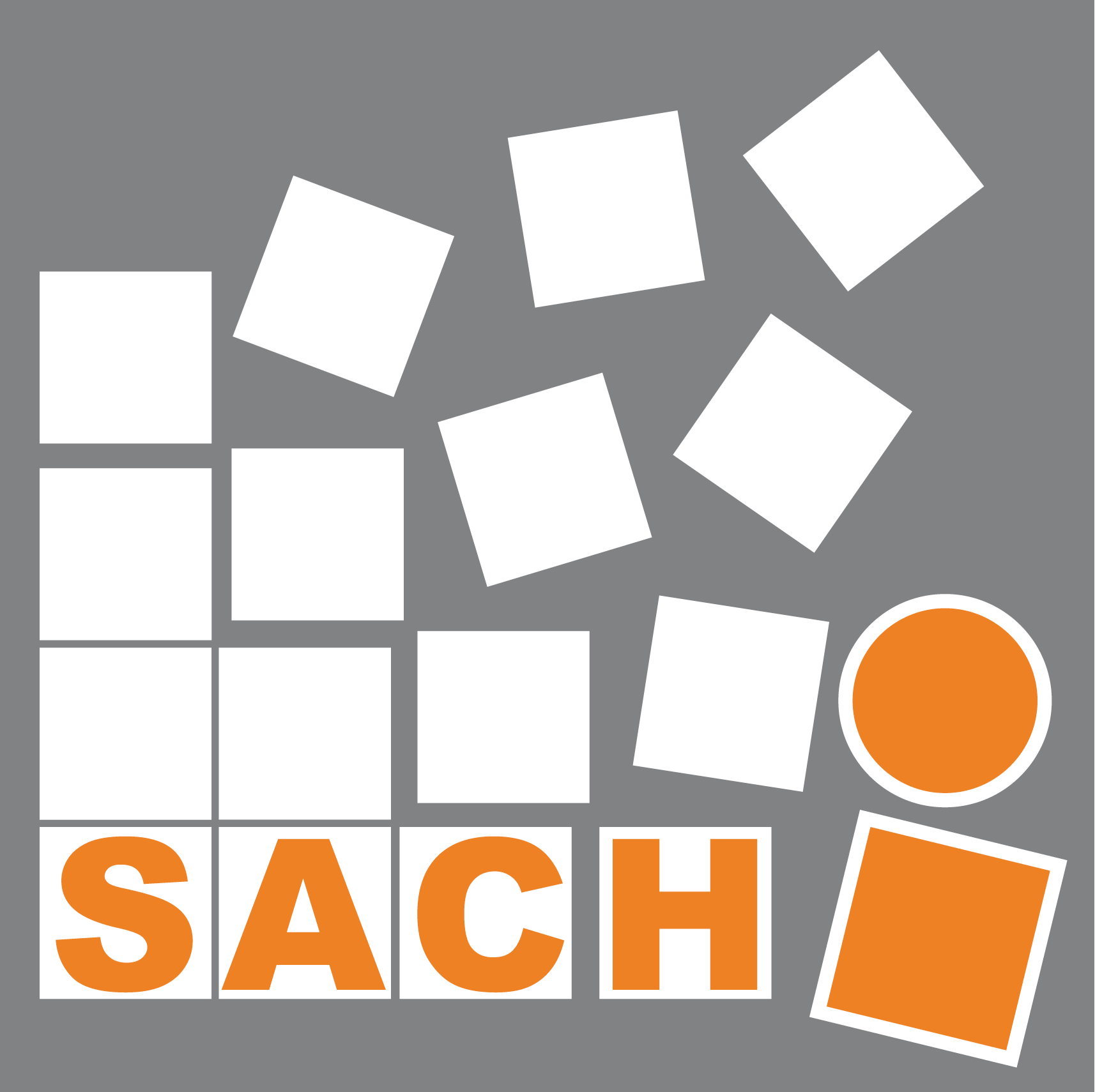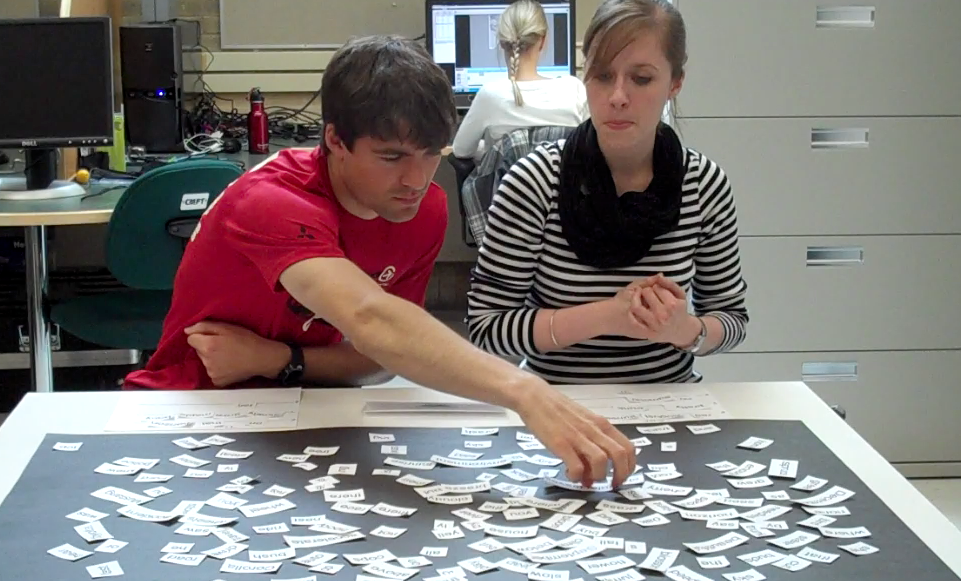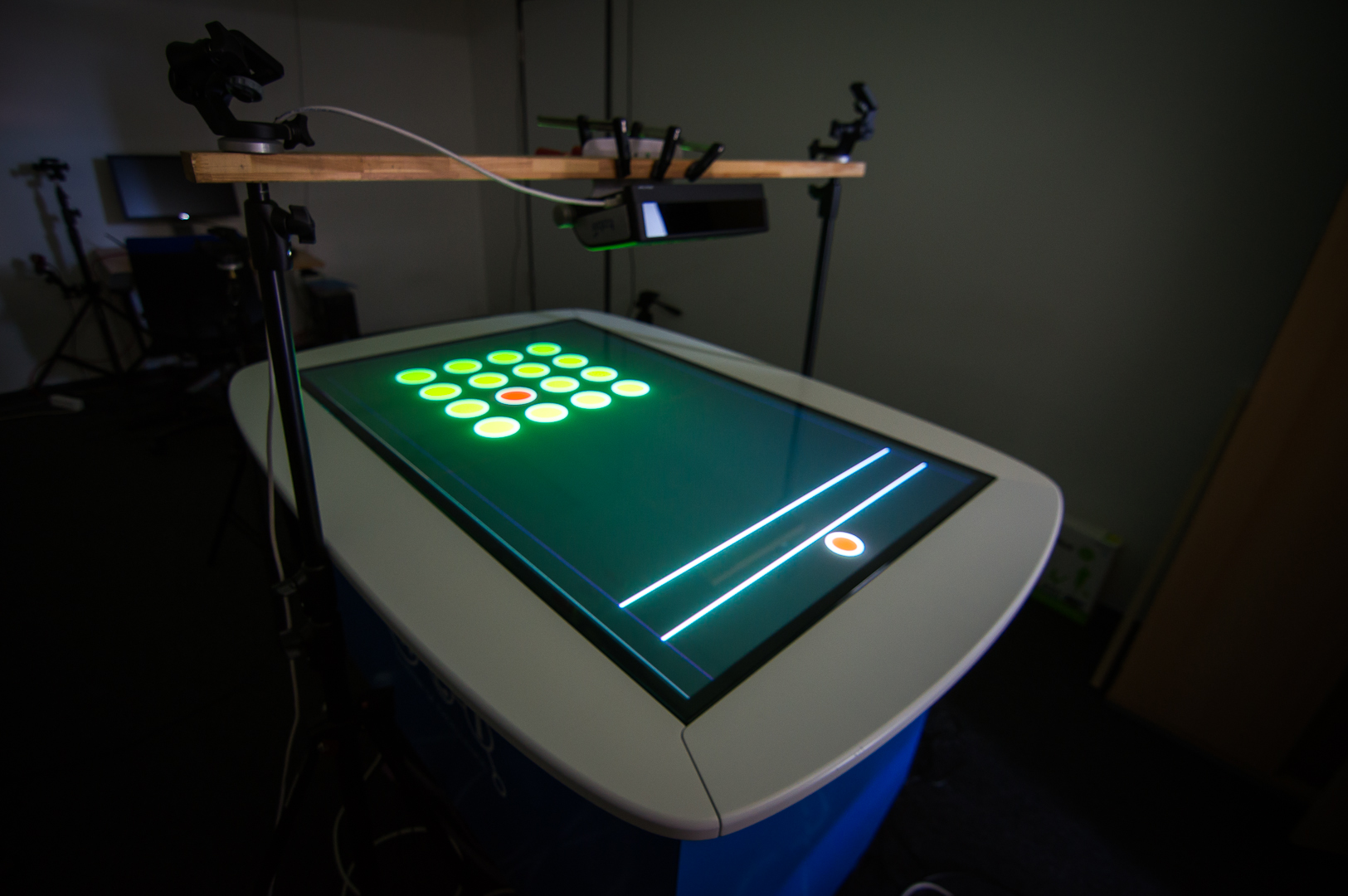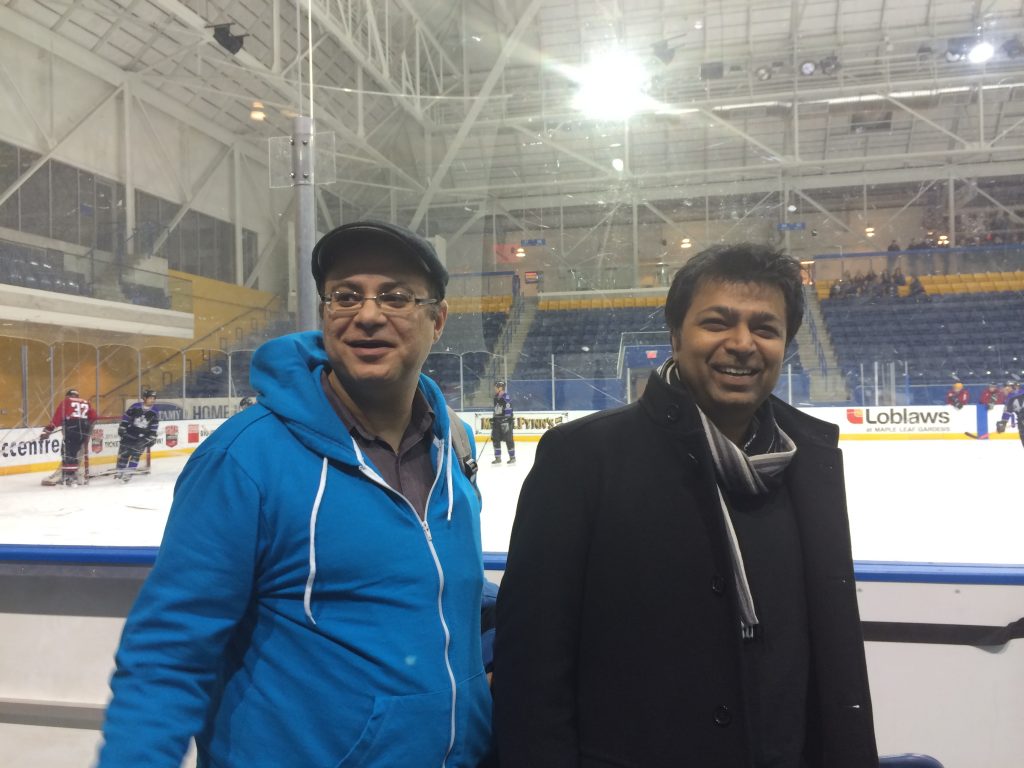<!–Speaker: Jakub Dostal, SACHI, School of Computer Science, University of St Andrews
Date/Time: 1-2pm March 5, 2013
Location: 1.33a Jack Cole, University of St Andrews–>
Abstract:
Modern computer workstation setups regularly include multiple displays in various configurations. With such multi-monitor or multi-display setups we have reached a stage where we have more display real-estate available than we are able to comfortably attend to. This talk will present the results of an exploration of techniques for visualising display changes in multi-display environments. Apart from four subtle gaze-dependent techniques for visualising change on unattended displays, it will cover the technology used to enable quick and cost-effective deployment to workstations. An evaluation of the technology as well as the techniques themselves will be presented as well. The talk will conclude with a brief discussion on the challenges in evaluating subtle interaction techniques.
About Jakub:
Jakub’s bio on the SACHI website.
News
CHI is the premier international conference on human computer interaction, and this year’s event is looking to be the most exciting yet for the St Andrews Computer Human Interaction (SACHI) research group.
Contributions to this year’s event come from several group members, and SACHI will be well represented with seven researchers in attendance: Professor Aaron Quigley, Dr Per Ola Kristensson, Dr Miguel Nacenta, Jakub Dostal, Michael Mauderer, Shyam Reyal, and Jason T. Jacques.
SACHI group members co-authored three full papers this year, on topics as broad as gesture-based interaction, tactile feedback, and text entry.
Papers
- Memorability of Pre-designed and User-defined Gesture Sets
Miguel A. Nacenta, Yemliha Kamber, Yizhou Qiang, and Per Ola Kristensson- The Effects of Tactile Feedback and Movement Alteration on Interaction and Awareness with Digital Embodiments
Andre Doucette, Regan Mandryk, Carl Gutwin, Miguel Nacenta, and Andriy Pavlovych- Improving two-thumb text entry on touchscreen devices.
Antti Oulasvirta, Anna Reichel, Wenbin Li, Yan Zhang, Myroslav Bachynskyi, Keith Vertanen, and Per Ola Kristensson
In addition, Miguel Nacenta and Per Ola Kristensson will have their note published regarding the perfomance and ergonomics of multi-touch rotation manipulations.
Note
- Multi-Touch Rotation Gestures: Performance and Ergonomics
Eve Hoggan, John Williamson, Antti Oulasvirta, Miguel Nacenta, Per Ola Kristensson, and Anu Lehtiö
In a collaborative work, three SACHI group members will present their work in progress, demonstrating an innovative method to improving the estimation of user distance.
Work In Progress
- The Potential of Fusing Computer Vision and Depth Sensing for Accurate Distance Estimation
Jakub Dostal, Per Ola Kristensson, and Aaron Quigley
Engaging with the research community is also central to SACHI’s goals, and CHI will be no exception with SACHI members hosting a special interest group and two separate workshops.
Special Interest Group
- Visions and Visioning in CHI: A CHI 2013 Special Interest Group Meeting
Organisers: Aaron Quigley, Alan Dix, Wendy E. Mackay, Hiroshi Ishii, and Jürgen Steimle
Workshops
- Grand challenges in text entry
Organisers: Per Ola Kristensson, Stephen Brewster, James Clawson, Mark Dunlop, Strathclyde, Leah Findlater, Poika Isokoski, Benoît Martin, Antti Oulasvirta, Keith Vertanen, and Annalu Waller- Blended Interaction, Envisioning Future Collaborative Interactive Spaces: A CHI 2013 Workshop
Organisers: Hans-Christian Jetter, Raimund Dachselt, Harald Reiterer, Aaron Quigley, David Benyon, and Michael Haller
SACHI’s will be also be well represented in many of these community meetings with five co-authored workshop papers.
Workshop Papers
- Visual Focus-Aware Applications and Services in Multi-Display Environments. In CHI 2013 Workshop on Gaze Interaction in the Post-WIMP World
Jakub Dostal, Per Ola Kristensson, and Aaron Quigley- Do we need a standard for
evaluating text entry methods? In CHI 2013 Workshop on Grand Challenges in Text EntryAntti Oulasvirta and Per Ola Kristensson.- Combining Touch and Gaze for Distant Selection in a Tabletop Setting. In CHI 2013 Workshop on Gaze Interaction in the Post-WIMP World
Michael Mauderer, Florian Daiber, and Antonio Krüger- Developing Efficient Text Entry Methods for the Sinhalese Language. In CHI 2013 Workshop on Grand Challenges in Text Entry
Shyam Reyal, Keith Vertanen, and Per Ola Kristensson- Authorship in Art/Science Collaboration is Tricky. In CHI 2013 Workshop on Crafting Interactive Systems
Lindsay MacDonald, David Ledo, Miguel A. Nacenta, John Brosz, and Sheelagh Carpendale
Academic service is important to the research community and SACHI will be giving back at this year’s CHI. Professor Quigley is serving as an associate chair in the Interaction Using Specific Capabilities or Modalities subcommittee, as well as serving as a session chair during the event, and Dr Kristensson serves as an associate chair for the Interaction Techniques and Devices subcommittee. After the event, Professor Quigley will staying on for the Program Committee meeting of the 2013 ACM International Joint Conference on Pervasive and Ubiquitous Computing (UbiComp 2013). Finally, to assist in the smooth running of this year’s conference, SACHI will also provide two student volunteers, Jakub Dostal and Jason T. Jacques.
<!–Speaker: Dr Urška Demšar, Centre for GeoInformatics, University of St Andrews
Date/Time: 1-2pm Feb 19, 2013
Location: 1.33a Jack Cole, University of St Andrews–>

Abstract:
Recent developments and ubiquitous use of global positioning devices have revolutionised movement analysis. Scientists are able to collect increasingly larger movement data sets at increasingly smaller spatial and temporal resolutions. These data consist of trajectories in space and time, represented as time series of measured locations for each moving object. In geoinformatics such data are visualised using various methodologies, e.g. simple 2D spaghetti maps, traditional time-geography space-time cubes (where trajectories are shown as 3D polylines through space and time) and attribute-based linked views. In this talk we present an overview of typical trajectory visualisations and then focus on space-time visual aggregations for one particular application area, movement ecology, which tracks animal movement.
Bio:
Dr Urška Demšar is lecturer in geoinformatics at the Centre for GeoInformatics (CGI), School of Geography & Geosciences, University of St. Andrews, Scotland, UK. She has a PhD in Geoinformatics from the Royal Institute of Technology (KTH), Stockholm, Sweden and two degrees in Applied Mathematics from the University of Ljubljana, Slovenia. Previously she worked as a lecturer at the National Centre for Geocomputation, National University of Ireland Maynooth, as researcher at the Geoinformatics Department of the Royal Institute of Technology in Stockholm and as a teaching asistant in Mathematics at the Faculty of Electrical Engineering at the University of Ljubljana. Her primary research interests are in geovisual analytics and geovisualisation. She is combining computational and statistical methods with visualisation for knowledge discovery from geospatial data. She is also interested in spatial analysis and mathematical modelling, with one particular application in analysis of movement data and spatial trajectories.
We are pleased to announce that Professor Aaron Quigley and Dr. Sara Diamond the President of the Ontario College of Art and Design University are the general co-chairs for MobileHCI 2014 the 16th International Conference on Mobile Human-Computer Interaction in Toronto, Canada. Associate Professor Pourang Irani, University of Manitoba invited Aaron to join this Canadian organising committee as an international member.
The chairs, Dr. Sara Diamond and Professor Aaron Quigley, have extensive experience organizing and managing academic conferences. Sara Diamond is President of the Ontario College of Art and Design University (OCAD U), Canada’s premiere university institution targeted at Art and Design and based in Toronto, proposed home for MobileHCI 2014. Aaron is the Chair of Human Computer Interaction at the School of Computer Science, University of St. Andrews, Scotland. He directs the St. Andrews Computer Human Interaction Research Group. Building upon a vast repertoire of resources available locally, nationally and internationally, both chairs look forward to delivering a successful and exciting MobileHCI 2014 event in Toronto.
<!–Speaker: Loraine Clarke, University of Strathclyde
Date/Time: 1-2pm Jan 15, 2013
Location: 1.33a Jack Cole, University of St Andrews–>
Abstract:
Interactive exhibits have become highly expected in traditional museums today. The presence of hands-on exhibits in science centres along with our familiarity of high quality media experiences in everyday life has increased our expectations of digital interactive exhibits in museums. Increased accessibility to affordable technology has provided an achievable means to create novel interactive in museums. However, there is a need to question the value and effectiveness of these interactive exhibits in the museum context. Are these exhibits contributing to the desired attributes of a visitors’ experience, social interactions and visitors’ connection with subject matter or hindering these factors? The research focuses specifically on multimodal interactive exhibits and the inappropriate or appropriate combination of modalities applied in interactive exhibits relative to subject matter, context and target audience. The research aims to build an understanding of the relationships between different combinations of modalities used in exhibits with museum visitors experience, engagement with a topic, social engagement and engagement with the exhibit itself. The talk will present two main projects carried out during the first year of the PhD research. The first project presented will describe the design, development and study of a Multimodal painting installation exhibited for 3 months in a children’s cultural centre for children. The second project presented is an on-going study with the Riverside Transport Museum in Glasgow of six existing multimodal installations in the Transport Museum.
Bio:
Loraine Clarke is a PhD student at the University of Strathclyde. Loraine’s research involves examining interaction with existing museum exhibits that engage visitors in multimodal interaction, developing multimodal exhibits and carrying out field based studies. Loraine’s background is in Industrial Design and Interaction Design through industry and academic experience. Loraine has experience in industry relating to the design and production of kayaking paddles. Loraine has some experience as an interaction designer through projects with a software company. Loraine holds a BDes degree in Industrial Design from the National College of Art and Design, Dublin and a MSc in Interactive Media from the University of Limerick.
Next year Miguel will join the program committee for the 2nd International Symposium on Pervasive Displays 2013 in cooperation with ACM / SIGCHI
“As digital displays become pervasive, they become increasingly relevant in many areas, including advertising, art, sociology, engineering, computer science, interaction design, and entertainment. We invite submissions that report on cutting-edge research in the broad spectrum of pervasive digital displays, from large interactive walls to personal projection, from tablets and mobile phone screens to 3-D displays and tabletops. The symposium on Pervasive Displays welcomes work on all areas pertaining to digital displays”. http://www.pervasivedisplays.org/2013/
 Aaron and Per Ola are two of the Associate Chairs for MobileHCI 2013, the 15th International Conference on Human-Computer Interaction with Mobile Devices and Services (MobileHCI 2013) which will be held in Munich, Germany August 27 – 30, 2013.
Aaron and Per Ola are two of the Associate Chairs for MobileHCI 2013, the 15th International Conference on Human-Computer Interaction with Mobile Devices and Services (MobileHCI 2013) which will be held in Munich, Germany August 27 – 30, 2013.
“MobileHCI is the world’s leading conference in the field of Human Computer Interaction concerned with portable and personal devices and with the services to which they enable access. MobileHCI provides a multidisciplinary forum for academics, hardware and software developers, designers and practitioners to discuss the challenges and potential solutions for effective interaction with and through mobile devices, applications, and services.” http://www.mobilehci2013.org/ Per Ola is also the workshops co-chair for MobileHCI 2013, the call for workshops 2013 is here.
Aaron  will be joining the Technical Program Committee of the 2013 ACM International Conference on Pervasive and Ubiquitous Computing (UbiComp 2013).
will be joining the Technical Program Committee of the 2013 ACM International Conference on Pervasive and Ubiquitous Computing (UbiComp 2013).
The UbiComp 2013 Program Chairs are Marc Langheinrich, John Canny, and Jun Rekimoto and they said of UbiComp 2013. That it is the first merged edition of the two most renowned conferences in the field: Pervasive and UbiComp. While it retains the “UbiComp” short-name in recognition of the visionary work of Mark Weiser, its long name (and focus) reflects the dual history of the new event, i.e., it seeks to publish any work that one would previously expect to find at either UbiComp or Pervasive. The conference will take place from September 8-12 in Zurich, Switzerland. Aaron has previously served on a number of Pervasive and UbiComp Technical program committees and looks forward to serving on this first joint conference UbiComp TPC which is now the premier forum for Ubiquitous and Pervasive Computing research.
http://www.ubicomp.org/
<!–Speaker: John McCaffery, University of St. Andrews
Date/Time: 2-3pm Dec 12, 2012
Location: 1.33a Jack Cole, University of St Andrews –>
Abstract:
Open Virtual Worlds are a platform of several advantages. They provide an out of the box mechanism for content creation, distributed access and programming. They are open source so can be manipulated as necessary. There is also a large amount of content that has already been created within a Virtual World. As such, in the field of HCI experimentation they provide an interesting opportunity. When experimenting with novel modes of interaction prototypes can be created within a Virtual World relatively easily. Once the prototype has been created, users can be put into use case scenarios based around existing content. Alternatively, custom environments with very constrained parameters can quickly be created for controlled experimentation.
This talk will cover some of the interaction modes currently being experimented with by the OpenVirtualWorlds group.
Bio:
John McCaffery is a PhD student in the Open Virtual Worlds group. John works on investigating how the open frameworks for distributing, programming and manipulating 3D data provided by Open Virtual Worlds can be used to provide a model for how the 3D web may develop. Open Virtual Worlds is a general term for open source, open protocol client / server architectures for streaming and modifying 3D data. Examples include the SecondLife viewer and its derivatives and the SecondLife and OpenSim server platforms. John’s work includes investigating how the programming possibilities of Virtual Worlds can be extended and how Virtual World access can be modified to provide new experiences and new experimental possibilities, built around existing content. For more information on John’s Work see his research blog.
<!–Speakers: Miguel Nacenta and Aaron Quigley, Computer Science University of St. Andrews
Date/Time: 1-2pm November 20, 2012
Location: 1.33a Jack Cole, University of St Andrews (directions)–>
Abstract:
Miguel Nacenta recently attended ITS 2012. The ACM international conference on Interactive Tabletops and Surfaces brings together researchers and innovators from a variety of backgrounds including engineering, computer science, design, and social sciences. Miguel is going to share with us his impressions of the Research Papers, Demos, Tutorials and Workshops he participated in. The ideas and perspectives shared at this year’s ITS include multi-touch and gesture-based interfaces, 3D interaction, interactive surfaces in education and for children, multi-display environments, non-flat surfaces, multitouch development, sketching the user interfaces and high-performance ITS technologies.
Aaron Quigley attendance at the recent UIST 2012.conference, allows Aaron to offer insight into the interesting Research Papers, Videos and Demos he enjoyed there. UIST (ACM Symposium on User Interface Software and Technology) is the premier forum for innovations in the software and technology of human-computer interfaces. UIST brings together researchers and practitioners from diverse areas. Some of the topics we can expect to hear about are traditional graphical & web user interfaces, tangible & ubiquitous computing, virtual & augmented reality, multimedia, new input & output devices, and CSCW.
As both UIST 2013 and ITS 2013 are taking place here in St. Andrews next October, it would be worthwhile attending to get a flavour of what to expect next year.
About Miguel:
Dr. Miguel Nacenta has been a University of St Andrews lecturer since May 2011, where he cofounded the SACHI group. Prior to this he was a post-doctoral fellow at the Interactions Lab, University of Calgary, Canada. He holds an electrical engineering degree from the Technical University of Madrid (Ingeniero Superior, UPM), and a doctorate from the University of Saskatchewan, Canada, under the supervision of Prof. Carl Gutwin.
About Aaron:
Professor Aaron Quigley is the Chair of Human Computer Interaction in the School of Computer Science at the University of St Andrews. He is the director of SACHI, the St Andrews Computer Human Interaction research group, His appointment is part of SICSA the Scottish Informatics and Computer Science Alliance. From August of 2012 he is the SICSA deputy director for knowledge exchange. He is the general co-chair for UIST 2013 and ITS 2013 (in St Andrews in Oct 2013).




